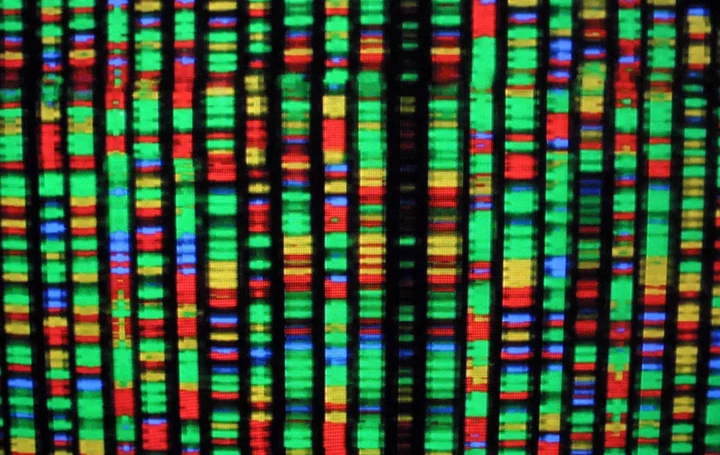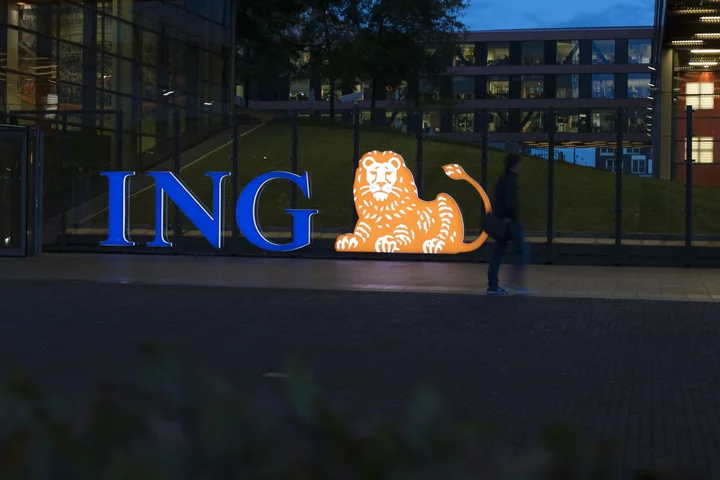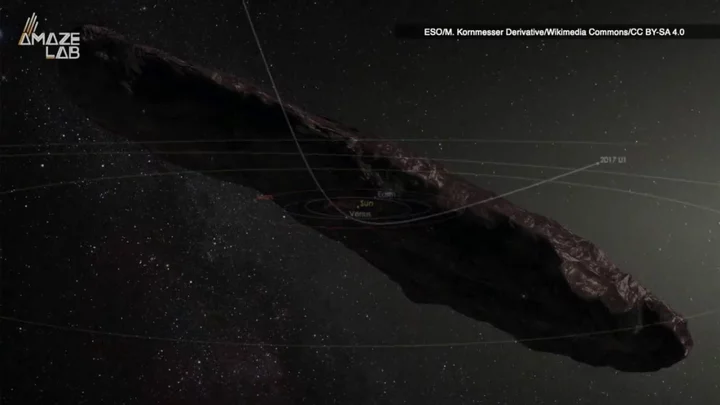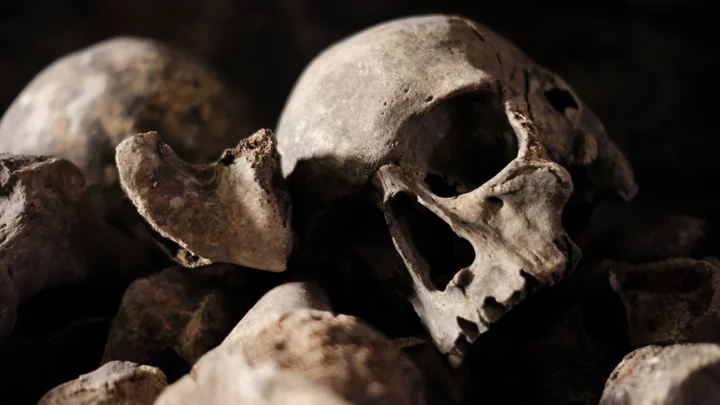
Xbox Game Pass Might Get Call of Duty, Diablo IV Next Year
Microsoft’s imminent acquisition of Activision Blizzard means the newest Call of Duty and Diablo games
2023-10-10 05:46

One Bond Market Is Defying the Global Selloff With Record Returns
As bond markets everywhere get battered by a cocktail of higher interest rates, deficit angst and hawkish central
2023-10-10 03:59

23andMe says hacker appears to have stolen people’s genetic information
A hacker has stolen the personal genetic information of 23andMe users, the company has said. 23andMe allows people to send in a sample of their DNA and have it tested, with the results sent into them. Customers can find out what their genetic information might tell them about their health, for instance, as well as their relatives and where they might have lived. But some of that same information was accessed by hackers and appears to have been made available online, the company said. It made the statement after the hackers appeared to be attempting to sell the information online. 23andMe did not say whether some or all of that data – which included the names of celebrities – was actually legitimate. But it did say that information had been “compiled from individual 23andMe.com accounts without the account users’ authorization”. Its investigation was still continuing, the company said, and it is unclear the scale of the problem. The data appears to have been taken by a hacker who used recycled login credentials from other websites that had since been hacked, the company said. That is a common technique for breaking into profiles, and cyber security experts suggest using different passwords on different websites and changing them regularly to avoid it. Once the hackers were able to get into those accounts, they used a feature on 23andMe that allowed them to gather yet more information. 23andMe offers a tool called “DNA Relatives”, which lets users connect with people with similar genetic information to help assemble their family tree – meaning that hackers were able to gather information about other people whose accounts had not actually been compromised. The company said that it had no indication that its own systems had been attacked, or that it was the source of the credentials used. But it advised people to change their password and set up multi-factor authentication to ensure that their accounts were secure. Read More Earth hit by a huge solar storm that would devastate civilisation, trees show Keir Starmer deepfake shows alarming AI fears are already here New discovery is ‘holy grail’ breakthrough in search for aliens, scientist say
2023-10-10 01:48

Earth was hit by largest ever solar storm that would devastate civilisation today, tree rings show
Earth was once hit by an extreme solar storm that would devastate human civilisation if it happened today, tree rings show. Scientists were able to piece together the solar storm from ancient tree rings that were found in the French alps, and showed evidence of a dramatic spike in radiocarbon levels some 14,300 years ago. That spike was the result of a massive solar storm, the biggest ever found by scientists. If a similar event happened today, it could knock the power grid offline for months and destroy the infrastructure we rely on for communications, scientists have warned. The researchers behind the new study have urged that the extreme nature of the newly discovered event should be a warning for the future. “Extreme solar storms could have huge impacts on Earth. Such super storms could permanently damage the transformers in our electricity grids, resulting in huge and widespread blackouts lasting months,” said Tim Heaton, professor of applied statistics in the School of Mathematics at the University of Leeds. “They could also result in permanent damage to the satellites that we all rely on for navigation and telecommunication, leaving them unusable. They would also create severe radiation risks to astronauts.” Further work is needed to ensure that the world is protected from similar events happening again, scientists said. And more research is required to actually understand how and why they might happen. Scientists have found nine extreme solar storms, or Miayake Events, that happened in the last 15,000 years. The most recent of them happened in the years 993 AD and 774 AD, but the newly found one was twice as powerful as those. Researchers do not know exactly what happened during those Miyake Events, and studying them is difficult because they can only be understood indirectly. That makes it difficult for scientists to know how and when they might happen again, or if it is even possible to predict them. “Direct instrumental measurements of solar activity only began in the 17th century with the counting of sunspots,” said Edouard Bard, professor of climate and ocean evolution at the Collège de France and CEREGE. “Nowadays, we also obtain detailed records using ground-based observatories, space probes, and satellites. “However, all these short-term instrumental records are insufficient for a complete understanding of the Sun. Radiocarbon measured in tree-rings, used alongside beryllium in polar ice cores, provide the best way to understand the Sun’s behaviour further back into the past.”  The largest solar storm that scientists were able to actually observe and study happened in 1859, and is known as the Carrington Event. It caused vast disruption to society, destroying telegraph machines and creating a bright aurora so bright that birds behaved as if the Sun was rising. The Miayake Events like the newly found storm would have been vastly more powerful, however. They were discovered by slicing ancient trees that are becoming fossils into tiny rings, and then analysing the radiocarbon that was present in them. Their work is published in a new article, ‘A radiocarbon spike at 14,300 cal yr BP in subfossil trees provides the impulse response function of the global carbon cycle during the Late Glacial’, in the journal The Royal Society’s Philosophical Transactions A: Mathematical, Physical and Engineering Sciences.
2023-10-10 01:16

Elon Musk's X adds to fog of war at outset of Israel-Hamas conflict
Misinformation has run rampant on Elon Musk's social media platform X in the 48 hours since Hamas militants' surprise attack on Israel, with users sharing false and misleading claims about the conflict and Musk himself pointing users to an account known for spreading misinformation.
2023-10-10 00:48

ING’s German Unit Drops High CO2-Risk Clients
The German unit of ING Groep NV is rejecting clients that fail to provide credible emissions-reduction plans, according
2023-10-09 23:23

Warm Weather Knocks Over £500 Million Off M&S and Next
There’s fresh evidence from the FTSE 100 today of quite how vulnerable retailers are to unpredictable weather. High
2023-10-09 23:22

The sun ripped a hole in the Earth's magnetic field and the results were spectacular
The Sun has been punching holes in the Earth’s magnetic field lately – but that’s not as alarming as it sounds. Instead, they have been sparking magnificent light shows across Europe and North America, made up mainly of crimson auroras and sustained periods of red sky. The displays have been caused by disturbances in the Earth’s magnetic field, which happened after a massive ejection of plasma from the Sun came hurtling our way. The event, known as a coronal mass ejection, made a hole in the planet’s magnetic field, allowing highly charged particles to make their way in and cause a geomagnetic storm. Normally, the Northern Lights are made up of mainly green, with the occasional flash of other colours including red. However, longer periods of red light shows are very rare. The highly charged particles then get channelled towards the north and south poles, where they interact with gas molecules in the atmosphere. They, in turn, release photons, causing the aurora borealis in the north and aurora australis in the south. Normally, the Northern Lights are made up of mainly green, with the occasional flash of other colours including red. However, longer periods of red light shows are very rare. But what makes this geomagnetic storm different is that the particles coming from the Sun collided with oxygen atoms higher in the Earth’s atmosphere than normal. The altitude at which this interaction happens dictates the colour of the aurora. This time, the charged particles were between 300 and 400 kilometres in the sky. There, the oxygen is less concentrated and doesn’t need as much energy to cause it to react. It all adds up to a flash of crimson red light in the sky. Somewhat excitingly for aurora-watchers, this sort of event is likely to get more common over the next two years, as the Sun’s activity becomes heightened until its peak in roughly July 2025. Looks like there will be more of these incredible ruby light shows soon enough. Sign up to our free Indy100 weekly newsletter Have your say in our news democracy. Click the upvote icon at the top of the page to help raise this article through the indy100 rankings.
2023-10-09 23:20

Distant objects show our solar system is bigger than we thought
The solar system is famously vast, but new data from scientists has revealed that it extends even further than once thought. It is a discovery that was made thanks to distant objects that were spotted during a scan of telescope images. They appeared to show faint signs of rock located beyond Pluto, suggesting that the material of the solar system extends further into interstellar space than was previously believed. The new method of looking at telescope images has dispelled decades of hypotheses from astronomers who believed that the Kuiper Belt, a circumstellar disc in the outer solar system, becomes suddenly more sparse from 48 times the distance between Earth and the Sun. But, belts of rubble have now been seen extending out more than twice the distance experts previously thought. The discovery was made by a team of astronomers who were led by Canada's Herzberg Astronomy and Astrophysics Research Centre who were on a mission to find new targets for the probe “New Horizons” to explore on its way through the outer reaches of the solar system. With light at the end of the solar system in short supply, experts realised if they stacked multiple images taken at different times, they could combine the light to increase the visibility of an object, increasing its visibility. Using machine learning to help them on their way, experts trained the system before testing it with real data captured from the Subaru Telescope on Mauna Kea in Hawaii. In comparison to humans, the technology identified more than double the amount of Kuiper Belt Objects, revealing to experts just how vast the solar system is. They presented their findings at the 54th Lunar and Planetary Science Conference 2023. While the team’s results have not yet been peer-reviewed, they appear to suggest that our solar system has a minimum of two rings of material stretching as far as the distance Pluto is from planet Earth. Sign up to our free Indy100 weekly newsletter Have your say in our news democracy. Click the upvote icon at the top of the page to help raise this article through the indy100 rankings.
2023-10-09 23:15

Scientists warn humanity has a '1 in 6' change of dying out this century
In 2020, philosopher Toby Ord published The Precipice, a book on the risk of human extinction. The chances of "existential catastrophe" for humanity in the next century according to Ord? One in six. It was a shocking number that alarmed many. After years of being flooded with warnings over climate change, rogue AI, nuclear weapons and pandemics, it's hard to disagree that humans face worrying chances. In his book, Ord discusses a number of potential extinction events, some of which can be examined through history. His research involved looking at the number of space rocks that have hit the moon over its history to figure out the likelihood than an extinction-sized asteroid hitting Earth. This was, in fact, looked at in 2022 by French scientists Jean-Marc Salotti, he calculated the odds of an extinction-level hit in the next century to be roughly one in 300 million. By contrast, Ord estimated the risk to be one in a million, although he does point out a considerable degree of uncertainty. Probabilities can be hard to understand in this context. Traditional probability, for example, relies on observations and a collection of repeated events, but human extinction would be a one-off. But there is another way to think if, called Bayesianism, after the English statistician Thomas Bayes. It sees probabilities as a ranking system of sorts. Specific number predictions shouldn't be taken so literally, but rather compared to other probabilities to understand the likelihood of each outcome. Ord's book contains a table of potential causes of extinctions, accompanied by his personal estimates of their probability. From a Bayesian perspective, we can view these as relative ranks. Ord thinks extinction from an asteroid strike (one in a million) is much less likely than extinction from climate change (one in a thousand). However, even using Bayesianism traditionally requires the incorporation of observational evidence. So, what do we make of Ord's "one in six"? Well it's better to take it less literally but to think of it as a warning, to jump start action on issues such as climate change to hopefully reduce the risk of human extinction in the next century. Sign up to our free Indy100 weekly newsletter Have your say in our news democracy. Click the upvote icon at the top of the page to help raise this article through the indy100 rankings.
2023-10-09 22:58

Scientists have just discovered a sixth taste to join salty, sweet, sour, bitter and umami
We're all familiar with the different basic tastes - sweet, sour, salty, bitter, and umami - but now scientists have found a sixth one where the tongue detects ammonium chloride. Research from USC Dornsife has discovered that protein receptors on the tongue not only respond to sour taste but also to ammonium chloride as well. Scientists were very much aware that the tongue responds to ammonium chloride, but haven't been able to specify which exact protein receptors... until now. The protein OTOP1 is responsible for this which can be found in the cell membranes and forms a channel for hydrogen ions moving into the cell. Whenever we taste anything that's particularly sour such as vinegar or lemon juice, OTOP1 is able to detect the acidity found in both of those. Therefore, given that ammonium chloride similarly affects the concentration of hydrogen ions within a cell, research was carried out on whether OTOP1 protein would react to this too. After lab-grown human cells with OTOP1 protein were created and exposed to acid or to ammonium chloride, the team found that ammonium chloride was a "strong activator" of OTOP1. “We saw that ammonium chloride is a really strong activator of the OTOP1 channel. It activates as well or better than acids,” Dr Emily Liman, a professor of biological sciences at USC Dornsife and study author. Now, perhaps you're wondering what ammonium chloride tastes like, one example of where it can be found is in salt liquorice candy which is popular in Nordic countries. “If you live in a Scandinavian country, you will be familiar with and may like this taste,” Dr Liman added. Though the flavour can be of an acquired taste and one that many may not be a fan of - but there is an explanation for this. “Ammonium is found in waste products – think of fertilizer – and is somewhat toxic, so it makes sense we evolved taste mechanisms to detect it,” Dr Liman explained. Sign up to our free Indy100 weekly newsletter Have your say in our news democracy. Click the upvote icon at the top of the page to help raise this article through the indy100 rankings.
2023-10-09 22:57

Should new tech rules apply to Microsoft's Bing, Apple's iMessage, EU asks
By Foo Yun Chee BRUSSELS EU antitrust regulators are asking Microsoft's users and rivals whether Bing should comply
2023-10-09 22:18
